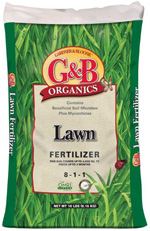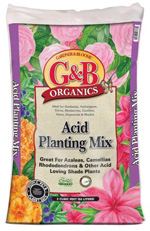|

     
|
 |
"God made rainy days so gardeners could get the housework done." |

Watering the BeesIf you have a pool, you may wonder why there are so many bees in it. Often you'll scoop up a half-dozen casualties when you're skimming the pool, and they tend to land on everyone, especially those wearing bright colors. Swimming pools are like big beacons for bees. They see them and they think "Water! Yes!" Swimming pools are a dependable water source for suburban animals. In many places a pool will be the only body of water inside their entire territory. They tell their friends and then they all know that your pool is the place to drink up. The problem is, you don't really want them there, and it's not a safe place for them, either. Bees have to dry out before they can fly, and the vertical and slippery walls on your pool make this impossible for them, so they will drown. A good way to help out your local pollinators and to keep your pool safer is to create a place for them to get water safely, away from your pool. All you'll need is a basin of some sort, wide and shallow works best, some clean water, and something to put in it for the bees to climb onto to dry off. A ceramic or clay pot base works well, but you could also use a bird bath, a bowl, or a bucket for the basin. Marbles, glass beads, fish gravel, rocks or wood can be used on the inside. The important thing is that there is something to hold water and a way for them to get out of the water. Arranging your filler at various heights in the basin will allow for bees to get water whether it's all the way full or mostly empty. Choosing a nice decorative basin and mixing and matching different sizes and colors of substrate will create a unique-looking and fully-functional bee bath. Once you've made your bee-bath, put it in a place that is low traffic and in the shade most of the day. Up high or low to the ground, the bees in your area will find it and tell their buddies where the good water is. If you keep it clean and full, they will come to know it as a safe place and will go there instead of your pool. The best part is, that while the bees are on their way to or from their new watering hole, they'll be stopping in your garden to help pollinate your plants. Tips for success:
|

|
Coneflowers (Echinacea species) are a native American wildflower that have found their way into our gardens because of their stunning beauty and hardiness. Originally only available in shades of purple and lavender, coneflowers now come in a wide range of colors. Thanks to the efforts of breeders across the country, they can now be found in shades of pink, white, purple, yellow, orange and salmon. They come in a range of sizes as well, from dwarf coneflowers that grow only 18" high and wide to varieties that grow 4-5' high and half as wide. The 3-5" diameter flowers on these robust deciduous perennials are arranged above sturdy, elongated, upright stems that are perfect for cutting and last in a vase from 5-7 days. The flowers have somewhat weeping petals that surround a coned center (thus, the name) and are produced from summer into fall. Coneflowers prefer full sun locations and regular watering in well-drained soil that keeps them moist, but not wet. They require a couple of feedings per year of a good flower food to keep them healthy and strong. Coneflowers make an excellent addition to any perennial garden and also look great in border or container plantings. They are a perfect selection for butterfly gardens. We invite you to stop by and bring some home today! |

|
Whether or not water restrictions are in effect, it's a good idea to think about how you can lower your water usage at home. Luckily, you won't have to consider keeping your showers to once a week, because most water usage, and potential for reduction, is outside your home. Here are some ideas to lower your water consumption without surrendering your yard to the desert. • Adjust your watering schedule. • Decrease the footprint of your lawn. • Dethatch your lawn. • Raise your mower blades. • Inspect your irrigation system. • Trim bushes back from sprinklers. • Add a layer of mulch to your shrubs and trees. • Use plants that need less water. Saving water is easy, and it has the potential to save you some cash and make your yard much more sustainable. If everybody reduced their usage a bit, the savings could be huge. |

|
By Tamara Galbraith When it's summertime and you're working on a tan, your plants may begin to take on a pale, pasty look. What gives? Say hello to the fungus disease known as powdery mildew. 
A common condition found on plant life throughout North America, powdery mildew is characterized by spots or patches of white to grayish talcum-powder-like growth. Fortunately, it is usually more of an effect than a problem itself. In other words, in addition to treating the plant, you'll probably want to take a look at the surrounding conditions and make some adjustments. The primary way to keep powdery mildew (and other fungi) from attacking your plants is prevention. Start now. First and foremost, make sure you give plants plenty of room. Good air circulation goes a long way. Trim plants that get crowded or bushy. Avoid overhead watering and do your watering in the morning so any water that does get on leaves has a chance to dry. If your plants are getting spray from a lawn sprinkler system, try moving the sprinkler a bit further away. If that's not possible, you might consider replacing your plants with more mildew-resistant plants or varieties. Do not put any plants that have had mildew in your compost pile - toss them. If you do get powdery mildew, to halt it in its tracks, spray the affected plants with a good fungicide. |
 |
|
How often should I cut my lawn? Answer: Following the one-third rule will produce smaller clippings that will disappear quickly by filtering down to the soil surface. If the grass becomes too tall between mowings, raise the mowing height and then gradually reduce it until the recommended height is reached. For the best appearance, mow and maintain your lawn at the best height for growth as determined by the type of grass you have. You can usually mow a grass that spreads horizontally shorter than an upright-growing bunch-type grass. Grasses with narrow blades can generally be mowed closer than grasses with wide blades. If your lawn is under stress--such as heat, drought or shade--mow at a higher level of cut. Proper mowing is important in maintaining a healthy lawn because it encourages a dense stand of grass plants. A dense turf keeps out weeds through competition for sunlight and nutrients. A weak, thin turf allows weed seeds to germinate and grow. Mowing practices can also affect the occurrence of disease. Many times an increase in disease can occur when turf is cut too low or is mowed when the foliage is wet. One final tip: Don't mow in the same direction each time. Alternate your mowing direction and you'll have more upright grass growth and a smoother-looking lawn. |

| What You'll Need:
Step by Step:
Yield: 4 servings |
 click here for a printer friendly version of this page
click here for a printer friendly version of this page
 |
Written content © Garden Partners LLC, or respective authors. All Rights Reserved. Privacy Policy. All written content contained in this site is protected by United States copyright law and may not be reproduced, distributed, transmitted, displayed, published, or broadcast without prior written permission of Garden Partners, LLC. You may not alter or remove any trademark, copyright or other notice from copies of the content. |




